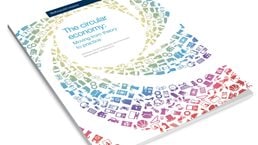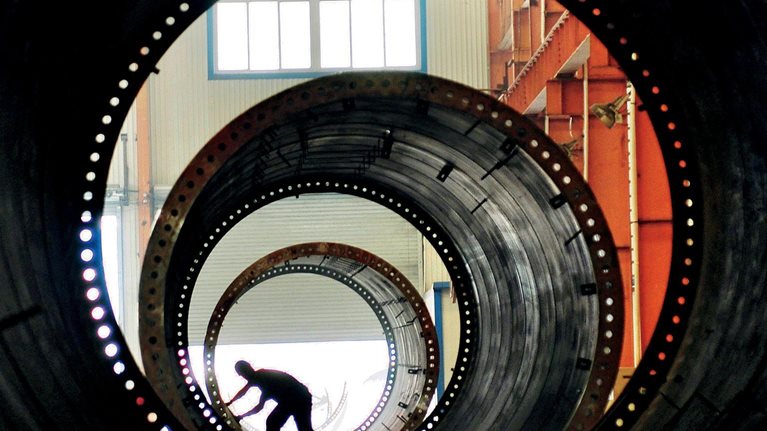Over the past 150 years, companies have steadily refined their ability to invent products and produce them efficiently, delivering a wide range of goods to consumers and improving financial returns to shareholders. In other respects, however, this system is far from optimal. Specifically, companies have hardly begun to reckon with the waste that occurs after products are purchased. When a consumer uses a product infrequently or discards it because it has worn out, at least some of the energy and material that went into making the product has been wasted.
Things don’t have to be this way. Some businesses are using circular-economy principles to create products that are durable, easy to reuse or recycle—and profitable. Nothing about this is easy, but two tactics can help.
The first is devising a highly collaborative product-development process that both accounts for and helps to determine sourcing requirements, production methods, marketing, sales, and other aspects of how goods are made and how they are handled at the end of their lives. The second is to use design thinking, which can help companies discover unexpected ways of meeting customers’ needs with much greater resource efficiency than in the past.
In this article, we explore how these tactics can help companies capitalize on the opportunities that the circular economy presents.
How collaboration helps companies develop circular-economy products
Few companies consider what happens to their products after they are purchased. The tacit assumption is that people will eventually throw them out and buy new ones; local waste collectors will take care of the discards.
Mechanical components, for instance, tend to be designed with ease of manufacturing in mind, because that makes them less expensive. This priority leads to design choices like snapping pieces together rather than joining them with removable fasteners. Making a part easy to manufacture, though, can make it all but impossible to disassemble or repair. Its fate is to be discarded, then replaced.
Now suppose the product-development process were to begin from a different premise, derived from the idea of a circular economy. Instead of considering only functionality and cost and assuming that products will be thrown out, a company would look at how it might manage the entire life cycle of its products in order to maximize the value of them and their component materials. For mechanical components, a manufacturer might give customers rebates for returning end-of-life parts so the manufacturer can refurbish them for resale at a lower price or dismantle them for recycling.
Would you like to learn more about our Sustainability & Resource Productivity Practice?
Circular-economy principles can be seen at work today in the mobile-phone sector. Some handset makers sell refurbished units of their own phones at a discount. Independent companies have also emerged to capture the residual value of used, older-model phones that still function. They collect these phones, fix them, install fresh software, and sell them, especially in markets where many people cannot afford or do not need the latest models.
The secondary market for mobile phones hints at the opportunity for consumer companies to retain more of the value of the material and energy they use to make their products. It also points to the business-model changes required to seize that opportunity, which begin with product development. Developing a product that a company can manage over its life cycle requires more collaboration than is customary. The product design has to be conducive to reuse, repair, and recycling. And the company needs processes and systems for helping customers when products wear out, approach obsolescence, fail, or no longer provide satisfaction.
Since these matters affect procurement, marketing, sales, and other company departments, as well as suppliers, freight carriers, distributors, retailers, and entities all along the value chain, all those departments and organizations need to have a say in product development. This is seldom the case today. Product developers typically receive specifications and design products accordingly.
When product development is a collaborative process involving the whole value chain, profitable breakthroughs are more likely to occur. At one medical-equipment company, for example, the sales department was given ambitious targets in emerging markets—and a portfolio of high-priced products. Bringing together sales, product development, and other teams revealed this problem and gave product developers a chance to help solve it. They figured out that by refurbishing used medical equipment from developed countries, the company could offer a lineup that would be appealing and affordable in emerging markets.
The medical-equipment company’s experience illustrates another benefit of making the product-development process more collaborative: it helps companies center the process on customers’ needs rather than product specifications. And when it comes to creating products with customers first in mind, one especially effective method is design thinking, a user-centered design approach that focuses on finding the best way to meet customers’ needs, rather than the best way to design products.
How design thinking reinforces circular-economy principles in product development
Design thinking starts with observing customers in their everyday lives to learn about their material needs and about how well (or poorly) those needs are met by existing products. Product designers, marketing specialists, engineers, and others involved in making and selling products use the resulting insights on customer needs to rapidly prototype, test, and refine new concepts for products and services, without relying on old assumptions that might constrain their ideas.
With respect to the circular economy, design thinking also means asking how to provide value to consumers using a minimum amount of material. Sometimes the answer is to offer services rather than products: think of how some people choose to store digital files in the cloud rather than on their own devices. If a physical unit is needed, design thinking might suggest that companies make their products more durable by using better materials, or make them easy to maintain with designs that allow critical components to be replaced when they wear out.
These concepts led the flooring company Desso to introduce a carpet-leasing service. Instead of buying carpet, customers now have the option to lease carpet from the company, which takes care of installation, maintenance, and removal. This arrangement gives Desso an incentive to manage materials efficiently. Indeed, Desso has cut waste and reduced its consumption of virgin material by treating old carpet as a valued commodity. The company collects carpet from its customers and other sources, including its competitors, and removes the fibers from the backing. The old fibers are recycled into new fibers; the backing is used as an ingredient in roads and roofs.

The circular economy: Moving from theory to practice
Understanding the possibilities associated with circular-economy ideas requires the expertise of many company departments as well as business partners. Design thinking thus relies on the sort of collaboration that is central to developing circular-economy products. In a design-thinking process, the company would start with a one- or two-day working session with all the affected departments and other organizations in the value chain. Participants would discuss customer needs and relevant business operations—particularly manufacturing and service—and come up with ideas for new offerings as well as the business-model changes needed to support them.
Given those concepts, the product-development team would create prototypes. The prototypes would be shared with the same groups from the initial meeting and discussed in another working session. Product developers would then refine their designs for further consideration by the wider group of stakeholders. This process would continue until the product is ready to be made and the business changes required to support it have been defined by the relevant departments. The final decision to bring out the product is also thus a choice about reorganizing the business so it can capture maximum value from the new product over its entire life cycle.
Reorienting business models and practices along these lines requires levels of collaboration and creative thinking that are far from familiar. So why should companies bother? One reason is that they face increasing pressure from consumers and governments, particularly in developed countries, to be better stewards of resources and the environment.
Another reason is to pursue a major financial and economic opportunity. Research suggests that each year some $2.6 trillion worth of material in fast-moving consumer goods—80 percent of the material value—is thrown away and never recovered.1 In a circular economy, more of this material would be used again in some form. In Europe, the net benefit of applying circular-economy principles could be as much as €1.8 trillion annually by 2030. Companies that successfully design products for a circular economy stand to capture considerable value and create lasting, rewarding relationships with customers.


